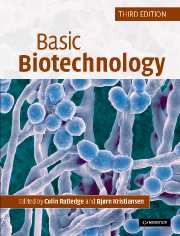Preface to the second edition
Published online by Cambridge University Press: 05 June 2012
Summary
It is some 14 years since the first edition of this book appeared. Much has happened to biotechnology in these intervening years. Recombinant DNA technology, which was just beginning in the mid 1980s, is now one of the major cornerstones of modern biotechnology. Developments in this area have radically altered our concepts of healthcare with the arrival of numerous products that were unthinkable 20 years ago. Such is the pace of biotechnology that it can be anticipated in the next 14 years that even greater developments will occur thanks to such programmes as the Human Genome Project which will open up opportunities for treatment of diseases at the individual level. All such advances though rely on the application of basic knowledge and the appreciation of how to translate that knowledge into products that can be produced safely and as cheaply as possible. The fundamentals of biotechnology remain, as always, production of goods and services that are needed and can be provided with safety and reasonable cost.
Biotechnology is not just about recombinant DNA, of cloning and genetics; it is equally about producing more prosaic materials, like citric acid, beer, wine, bread, fermented foods such as cheese and yoghurts, antibiotics and the like. It is also about providing clean technology for a new millennium; of providing means of waste disposal, of dealing with environmental problems. It is, in short, one of the two major technologies of the twenty-first century that will sustain growth and development in countries throughout the world for several decades to come.
Information
- Type
- Chapter
- Information
- Basic Biotechnology , pp. xiii - xivPublisher: Cambridge University PressPrint publication year: 2006
